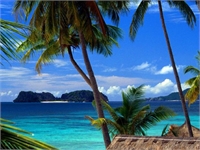
Palawan: Jewel of the Philippines
Important Notice: Our web hosting provider recently started charging us for additional visits, which was unexpected. In response, we're seeking donations. Depending on the situation, we may explore different monetization options for our Community and Expert Contributors. It's crucial to provide more returns for their expertise and offer more Expert Validated Answers or AI Validated Answers. Learn more about our hosting issue here.

Palawan: Jewel of the Philippines
You must be logged in to post a comment.
I’d like to tell you of all the virtues of the Island province of Palawan. Unfortunately, we spent our entire time there in Puerto Princesa, and there is a lot more to the island than the capitol, wondrous sights such as El Nido and the northern islands. Fortunately, many of Palawan’s highlights lie within the city boundaries of Puerto Princessa, which are extensive for a city of less than a quarter million inhabitants, so it was hardly a wasted trip.
But I’m getting ahead of myself.
I had such beautiful photos for this article… until Experts123 deleted them! Why do they hate me when I contributed so much?